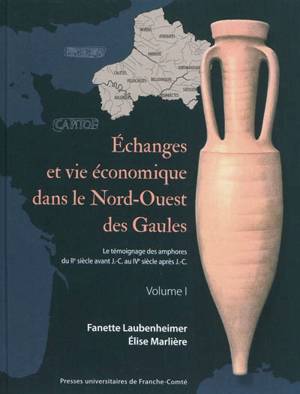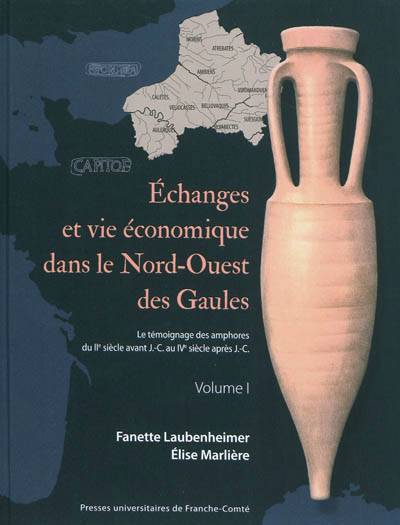
- Retrait gratuit dans votre magasin Club
- 7.000.000 titres dans notre catalogue
- Payer en toute sécurité
- Toujours un magasin près de chez vous
- Retrait gratuit dans votre magasin Club
- 7.000.000 titres dans notre catalogue
- Payer en toute sécurité
- Toujours un magasin près de chez vous
Echanges et vie économique dans le nord-ouest des Gaules : Nord-Pas-de-Calais, Picardie, Haute-Normandie
le témoignage des amphores du IIe s. av. J.-C. au IVe s. apr. J.-C.
Fanette Laubenheimer, Elise MarlièreDescription
Étudier les amphores dans le nord-ouest de la France est inattendu. Et pourtant on s'aperçoit que la Gaule toute entière a été le lieu de maintes transactions liées au commerce des denrées transportées dans des amphores. Les grands travaux récents du nord-ouest ont fourni un matériel étonnant étudié ici avec celui des collections anciennes. Oppida, chefs-lieux de cités, vici, établissements ruraux , villae, sanctuaires, camps militaires, nécropoles, soit 281 sites, ont livré près de 48 000 tessons, soit environ 3500 amphores. Ce riche corpus auquel s'ajoute une remarquable collection de 235 timbres, des tituli picti et des graffites, permet une synthèse sur la consommation et la provenance du vin, de l'huile, des sauces de poissons... les voies commerciales, voire les productions locales et aussi certains rituels qui associent les amphores et la mort.
Study of amphorae from the North-West of France is uncommon. And yet one discovers that the entire Gaul has been a space of many transactions linked to the trade of products which were carried in amphorae. Recent public works in the Northwest have brought to light an astonishing new material, which is studied here along the ancient one. Oppida, cities, vici, rural settings, villae, sanctuaries, military camps, necropolis, on the whole 281 sites, have given nearly 48 000 potsherds, which makes about 3500 amphorae. Such a rich corpus, to which is added a remarkable collection of stamps (235), tituli picti and graffiti, allows a synthesis on the consumption and the source of wine, oil, fish sauces... the trade roads, even the local productions, and also on certain rituals associating amphorae with death.
Spécifications
Parties prenantes
- Auteur(s) :
- Editeur:
Contenu
- Nombre de pages :
- 594
- Langue:
- Français
Caractéristiques
- EAN:
- 9782848672878
- Date de parution :
- 02-09-10
- Format:
- Livre relié
- Dimensions :
- 220 mm x 280 mm
- Poids :
- 2690 g







